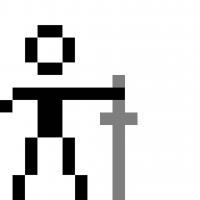the large "carrier" type ships in Battlestar Galactica would be a uselessly huge target.
Not if done properly.
Is a nimitz class aircraft carrier a big target? Sure. But getting a hit on it is not trivial as there is a layered approach to security using a carrier battle group, jamming, anti aircraft and anti missile technology backed by onshore radar etc.
Taking this into space and Sci fi, galactica wouldn't have been designed to operate alone as it had to in the show, it's just that the cylon attack would have eliminated the rest of the battle group.
If I was to implement your game I would make planetary and space based radar/scanning tech part of it and make large targets protected by layers of backup ships that have to be gotten around.
Getting around those strategies and forming a successful attack plan would be like attacking a base in an rts and would be where the real fun would lie...









